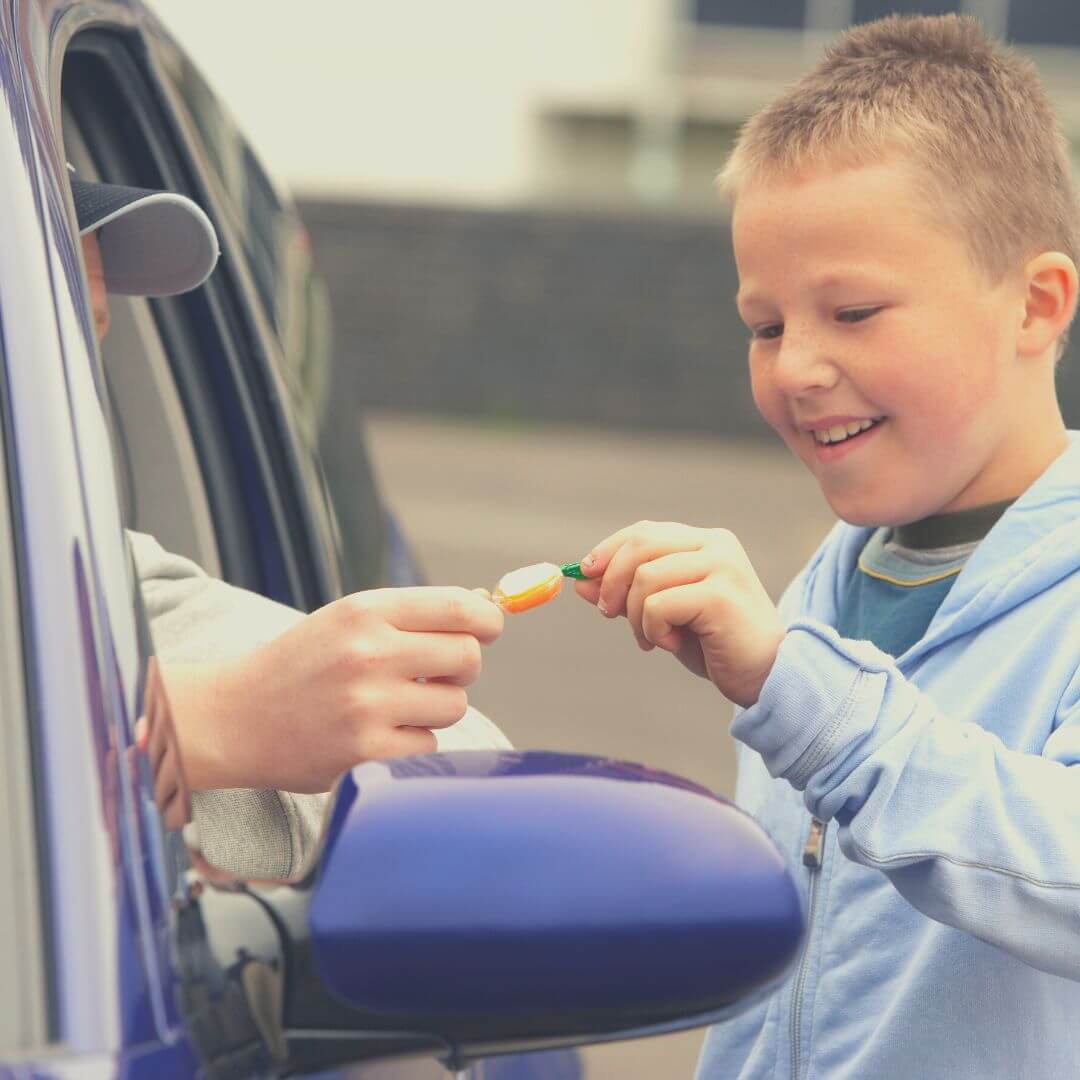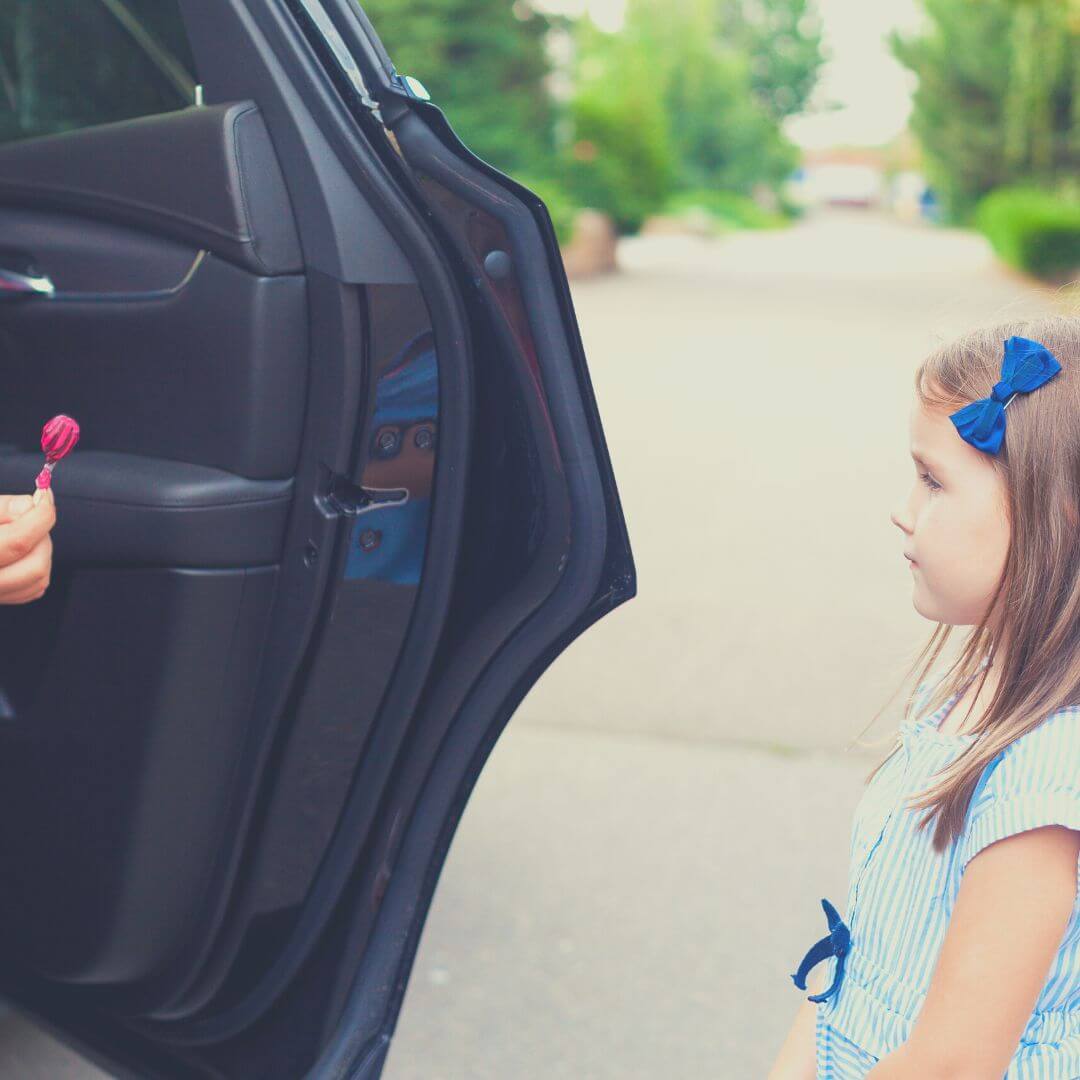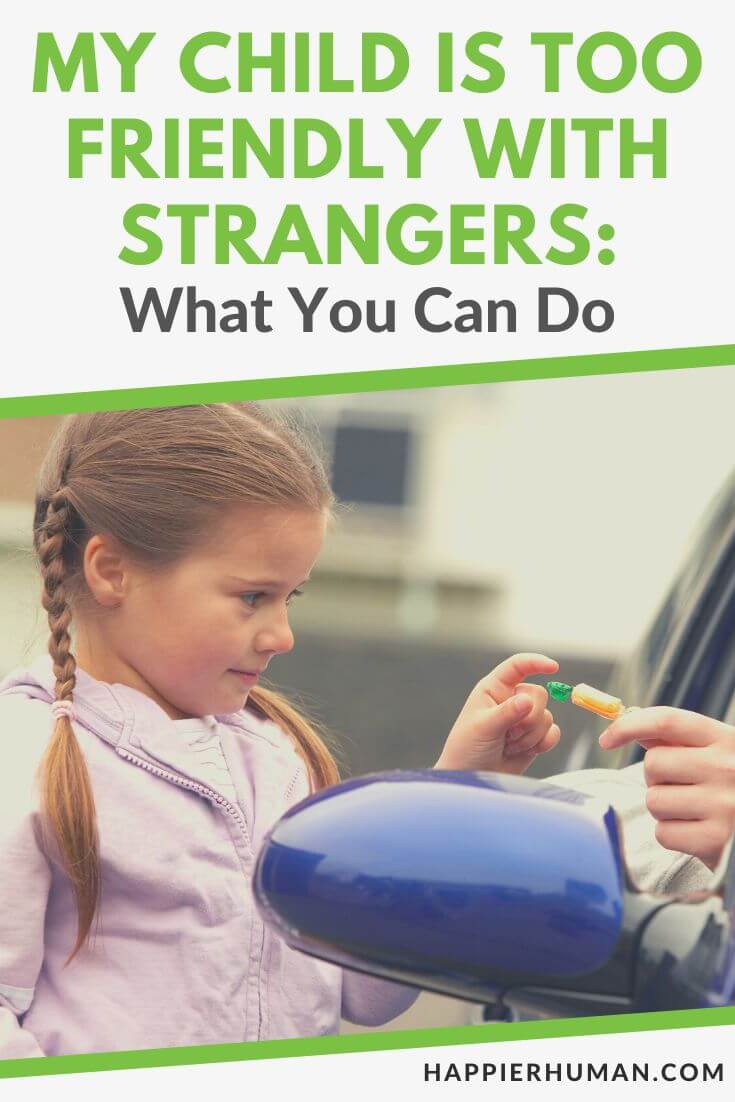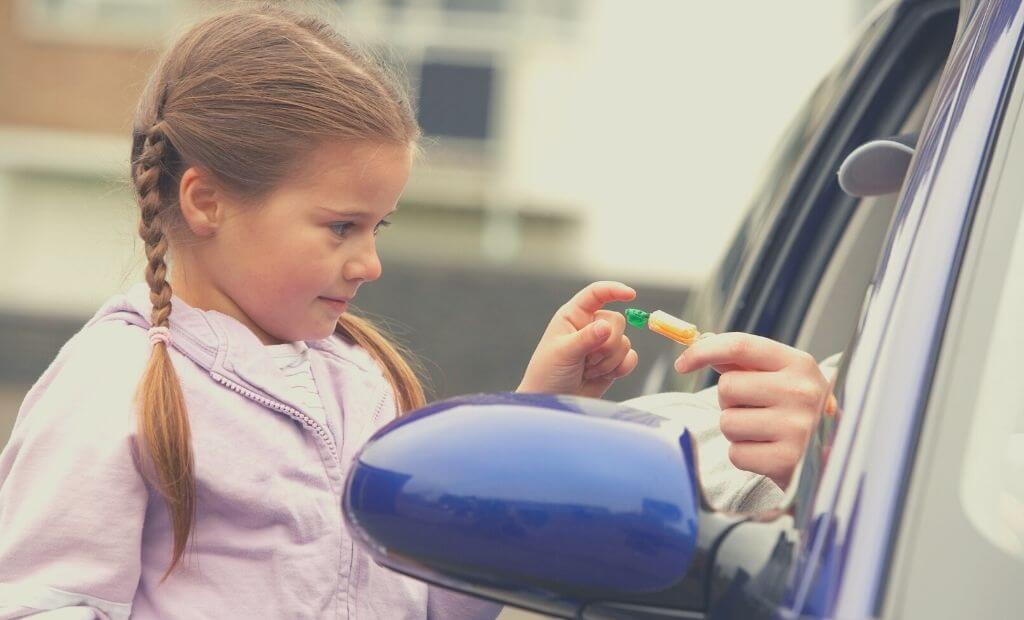Most young children are inclined to want to talk to, or go with, a friendly-looking adult. However, as a parent, it's important to teach them about the dangers of doing so. Our little ones must learn how to recognize when someone may or may not have the best intentions.
When it comes to child safety, one of the most commonly cited concerns is stranger danger. You’ve probably heard the term before, and you were likely taught about it when you were a child yourself.
But what exactly does that mean?
What Is Stranger Danger?
The term “stranger danger” refers to the danger that children may face from adults who they don’t know. The idea is that children should be taught to be wary of strangers, and to never go off with them or accept gifts from them.
As a child of the 1980s, I remember being taught about stranger danger in school. We were shown PSAs and on TV warning us about the dangers of talking to strangers. We were also taught to “say no” if a stranger tried to offer us candy or gifts.
Issues With the Stranger Danger Concept
The problem with the concept of stranger danger is that it’s vague and outdated. In today’s world, there are many types of safe strangers that children may encounter… such as police officers, store managers, or other parents with children.
And, sadly, it’s not always strangers putting a child in danger. There have been cases of children being hurt, abducted, or worse by someone they know. There is danger beyond strangers that kids should be aware of.
That is why the better way to teach your child about stranger safety is to teach them the dangers of “tricky adults”.
Who Are Tricky Adults?
Tricky adults are adults who may try to harm children. They may use tricks or deception to lure children away from safety. They may also offer children gifts or money in order to get them to go with them. As implied earlier, a tricky adult may be a person the child knows.

Unfortunately, there are as many as 460,000 children reported missing every year in the United States! It’s important to teach your children about tricky adult behavior (strange and familiar ones), so that they know what to look for and how to stay safe.
10 Steps on How to Teach Children How to Deal With Adults
Showing your children how to be cautious of adults, while knowing who to trust, is a sensitive and complicated right of passage as a parent. Let's go over a few steps that can help you.
1. Review Different Scenarios with Them
You can role-play different scenarios with your children so that they know what to do if they're ever approached by a tricky adult.
Some scenarios can include:
Help the child understand that most adults don't ask children for help and, if they do, it should be done in a public place where there are other people around.
Otherwise, an adult approaching a child for help would be considered one of the tricky people. Adults ask other adults for help.
Role-play each scenario and tell the child what they did correctly and what they should do differently next time. Repeat until your child seems to have a good understanding and reaction to each situation.
2. Brainstorm a List of “Tricky People”
You can sit down with your children and brainstorm a list of people who may try to trick or hurt them. This can help them be on the lookout for these types of people.
Some examples of tricky people can include:
3. Teach Them the Difference Between a Stranger and a Friend
Most people think of strangers as people who they don’t know. However, you can also consider someone a stranger even if you’ve met them before.
Strangers are people who you don’t know well and who you haven’t been introduced to by a trusted adult.
Friends are people who you know well and who have been introduced to you by a trusted adult. Some neighbors may still be in the stranger category, until a parent has had a chance to get to know them.
4. Teach Them about Good Touch and Bad Touch
Children need to know the difference between good touch and bad touch. They should also know that they have the right to say no to anyone who is trying to touch them in a way that makes them feel uncomfortable.
Good touch is touch that is gentle and makes you feel good. It can include a hug from a friend or family member, a pat on the back, or a high-five. Doctors are also usually safe, as the ones to be trusted won’t touch their private parts without a parent or nurse in the room.
Bad touch is touch that is hurtful or makes you feel uncomfortable. It can include someone touching your private parts, someone hitting you, or someone grabbing/pulling you to take you somewhere without your parent’s permission.
5. Teach Them the “NO, GO, YELL, TELL” Rule
This is a rule that can help children remember what to do if they’re ever approached by a tricky person.
The “NO, GO, YELL, TELL” rule goes like this:
- Say “NO” to the person
- Get away from the person by GOing
- YELL for help
- TELL a trusted adult what happened as soon as possible
6. Teach Them to Never Go Anywhere with a Stranger
Children should never go anywhere with a stranger, no matter what the reason is. This includes going to a stranger’s house, getting into a stranger’s car, or going anywhere else with a stranger.
7. Start Using a Daily “Code Word”
Come up with a code word that only you and your child know. This can be used as a secret password of sorts. If anyone ever tries to pick up your child from school, or take them somewhere, they should know the code word. If the person doesn't know the code word, your child should know not to go with them.
Each morning, go over the new code word and post it somewhere visible in your house. This way, everyone in the family will know what it is and can help to remind your child if they forget.
8. Safe Strangers
Children should be aware of safe strangers such as firefighters, security guards, other teachers in school, police officers, and other first responders. These are people who can help them if they’re ever in danger. Parents with other children with them can also be considered safe strangers.

Make sure to point out safe strangers to your child when you see them, so they’ll know who to look for if they ever need help.
9. Review Family Rules Regularly
It’s important to review family rules regularly with your children. This will help to ensure that they remember what they’re supposed to do if they ever find themselves in a tricky situation.
Some basic safety rules that every family should have are:
- Never open the door to a stranger
- Never go anywhere with a stranger
- Never get into a car with a stranger
- Never take gifts from a stranger
You can even make a poster of these rules and hang it up in a prominent place in your home as a reminder.
Regularly review these rules with your children and make sure they understand them.
10. Encourage Them to Tell You about Their Day
Make it a point to ask your child about their day every day. This will help you to keep a pulse on what’s going on in their life and will give them a chance to tell you if anything out of the ordinary happened.
Maybe they notice a strange man or car following them on their way home from school. They may have been approached by a stranger who asked them to do something that made them feel uncomfortable. Remember some tricky adults don't strike immediately. They may simply watch or try to become friends with your kid first to gain their trust.
Children may be hesitant to tell you if something bad happened to them for fear of getting in trouble. Reassure them that they won’t get in trouble and that you just want to know what happened so you can help.
If your child ever comes to you and tells you about something that made them feel uncomfortable, listen to them and take their concerns seriously. Thank them for telling you and let them know that they did the right thing.
Final Thoughts About Teaching Children About Strangers
While showing your children how to be safe around strangers is important, do so with proper balance. Remember, at this stage, you are also trying to socialize your children. You don't want your little ones to develop into unfriendly and anti-social adults; but you also don’t want them to be so social they put themselves in harm’s way.
Just like anything else, teaching children how to be weary of strangers is a process. It will take time for them to learn and internalize all the stranger safety tips you teach them. Be patient and keep at it… and keep the lines of communication open.
For more ways to help your child's development, check out The 21 Best TED Talks for Kids to Enrich Their Lives.


